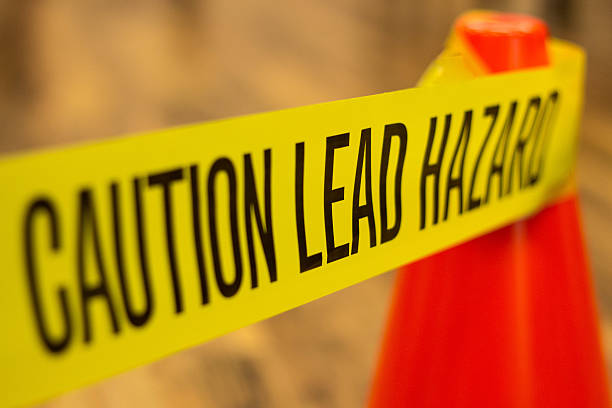Where there is paint in older homes, there could very likely be lead-based paint. Anyone living or working in a building built before 1978 should assume lead-based paint (LBP) might be present, and protect yourself and your family accordingly.

The Dangers of Lead
Lead poisoning can cause serious illness, including brain damage, and is not just a concern for children and pregnant women. Lead poisoning most often occurs via ingesting or breathing in lead dust. Everyone working around old paint should be concerned. Test yourself and your children for lead, even if you believe you are healthy, since a baseline is valuable, whether you are launching any home projects or not. The only way to find out if paint, dust or soil is hazardous is to test them.
Almost 1 million people die every year due to lead poisoning, with more children suffering long-term health effects.
- Each year, an estimated 1 million people, die from lead poisoning.
- Millions more, many of them children, are exposed to low levels of lead causing lifelong health problems, including anemia, hypertension, immunotoxicity and toxicity to the reproductive organs.
- 1 out of every 11 children in the US has dangerous levels of lead in their bloodstream.
- Even children who appear healthy can have dangerous levels of lead.
- Lead exposure can harm babies before they are born.
Lead poisoning is very common. 1 in 40 children ages 1-5 years old has blood lead levels that are considered unsafe (over 5 µg/dL).
Lead Poisoning
Leads toxicity became widely recognized in the late 19th century, although a number of well-educated ancient Greek and Roman writers were aware of the effects and the symptoms of lead poisoning. Lead is a neurotoxin that accumulates in soft tissues and bones. It damages the nervous system and interferes with the function of biological enzymes. Lead poisoning causes neurological disorders ranging from behavioral problems to brain damage. It also affects general health, and the cardiovascular and renal systems.
Lead interferes with some of the body’s most basic biological functions. The human body does not distinguish between lead and calcium. This causes lead to be absorbed into our bones which then leaches calcium from the body. In the U.S., approximately 900,000 children ages 1-5 have a blood lead level exceeding the level of concern.

Effects of Lead Poisoning in Children
- Persistent Tiredness
- Hyperactivity
- Loss of Appetite
- Weight Loss
- Reduced Attention Span
- Difficulty Sleeping
- Constipation
Effects of Lead Poisoning in Adults
- Difficulties During Pregnancy
- Reproductive-Fertility Problems
- High Blood Pressure
- Digestive Problems
- Nerve Disorders
- Memory & Concentration
- Muscle & Joint Pain
Lead poisoning is measured through blood testing. The amount of lead in blood is referred to as the “blood lead level”, which is measured in micrograms (one millionth of a gram) of lead per deciliter of blood (μg/dL). The CDC currently uses a blood lead reference value (BLRV) of 3.5 micrograms per deciliter to identify children with blood lead levels that are higher than most children’s levels.
Sources of Lead
- Leaded Paint
- Soil
- Dust
- Drinking Water
- Parental Occupations And Hobbies
- Air
- Food
- Folk-Cure Medications
- Pottery
- Leaded Glass
Lead in Water & Gas
The Safe Drinking Water Act of 1986 and 1988 restricted the use of lead in plumbing fixtures, but lead can still be found in older plumbing.
- Used in fixtures, pipes, soldering which can leach into the water.
- Oil companies added lead to gas to stop engine knock.
- An estimated 4-5 million metric tons of lead from gas is still in the environment, mostly on the side of highways and rural roads.
Who Should Be Tested for Lead
- An at-risk child should be tested at 6 months of age.
Repeat every 6 months until age 2.
After 2, the child should be tested once a year until age 6. - A child that is “not at risk” should be tested at age 1, and again at age 2.
- Anyone living in or working in older homes should get tested for a baseline.
At Kronenberger & Sons, We Strive to Keep Everyone Safe
We take lead hazards and handling of LBP very seriously around here, and have very strict guidelines for handling projects involving LBP. For more on our Lead Safe Practices please read our blog: Lead Paint & Hazardous Materials – How We Keep Everyone Safe
Do you have an upcoming project? Please read our blog: Does Your House Have Lead Paint? How to Handle Projects in Old Home
For more information call the Lead Hotline at 1-800-424-LEAD or go to EPA Lead.



